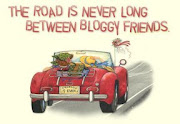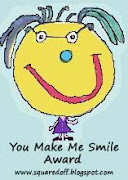The turning point for me was ending up in the hospital for a week when I hadn't even known I was sick. All I did was go to church! While there I participated in a free blood pressure screening, more to please the friend who had set it up as a ministry than anything. But my blood pressure was something like 250/130. They called it a hypertensive crisis. At the emergency room they discovered I also had really high blood sugar. By the time they released me I was on roughly 21 pills a day, which "lowered" my blood pressure to about 164/101 and my sugar to 271. Not very encouraging.
While I was in the hospital, I was visited daily by two different dietitians, one for the hypertension and one for the diabetes. Their advice wasn't exactly contradictory, but basically what one would allow me the other one wouldn't. I remember pouting that they were putting me on a no-food diet! When I got home, though, I sat myself down and took a hard look at what I had been doing to get myself in this mess, and what I could do to get myself out of it. The scenario of a very long term nursing home situation while I was still in my 40's had been painted for me in lurid detail, and it didn't appeal to me a whole lot.
The first thing I did was think of food as fuel, almost as a scientific formula. I thought about which foods provided which nutrients, especially protein, carbohydrates and fats. I thought about how much I needed when, and what combinations would please me the most. I began writing down what I ate when, how many calories, carbohydrates and sodium grams each had, how much water I drank and how much exercise I did. I measured everything. I really worked hard at learning about food and nutrition and how it all affected me personally. After a while I began to learn enough to be able to cut some corners without harming myself. For instance, the diabetes educator taught me about the plate method of serving up dinner. One-half of the plate was to be devoted to vegetables of some kind. Salad, green beans, whatever I wanted, and lots of it. A fourth of the plate was some sort of protein and a fourth was a carb. I could add a milk or fruit, but I learned it was better to have them at a different time. In other words, eat more often during the day with less at each sitting. And many people have learned that they do better eating off smaller plates. What I did was splurge on veggies, which took the edge off my hunger, and then I found the 1/2 to 1 cup of pasta or potatoes and the 3 oz of meat were more than enough!
Then I learned ways to measure portions more easily. Your measuring device is literally in the palm of your hand! The tip of the thumb is about 1 teaspoon - think butter or mayo. The closed fist is the size of 1 cup. The palm of the hand is the size of a portion of meat, about as thick as the little finger is wide. There are other tips, too. A medium-sized potato is about the same size as a computer mouse, or 1/2 a soda can. A golf ball measures about 1/4 cup. 1 oz of nuts is about 2 full shot glasses. Fill a coffee mug with pretzels - that's about 3/4 oz. One chicken thigh or leg is about 2 oz of meat, while 1/2 of a chicken breast is 3 oz.
Subscribe to:
Post Comments (Atom)



























No comments:
Post a Comment